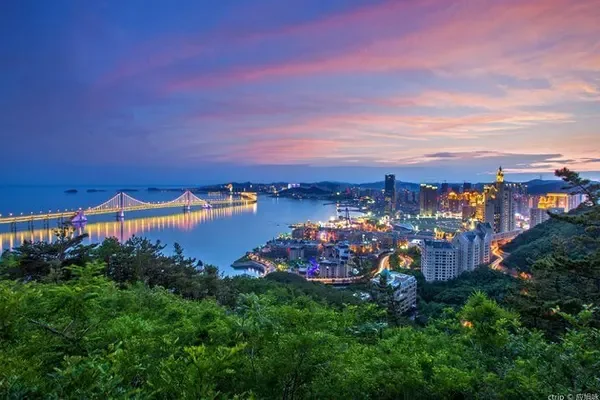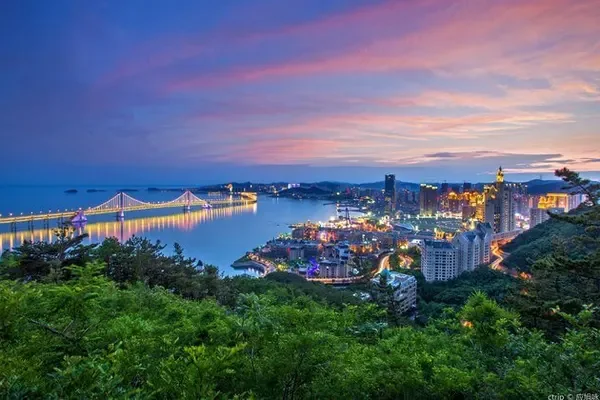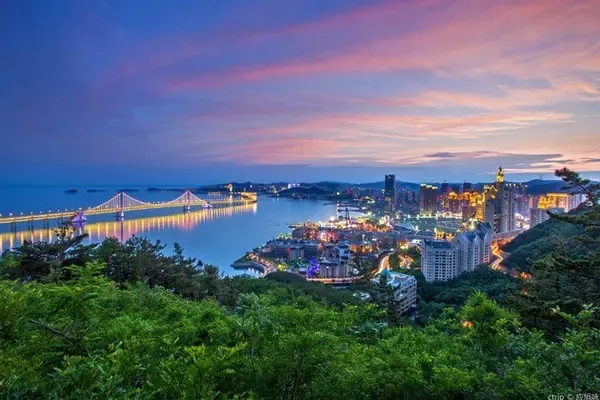Where does the story of "The West Chamber" take place? Where is the stork tower that climbs up and looks far away? Where is Pujin Ancient Ferry?
They are all in Yuncheng in the southwest of Shanxi, and they are all in Yongji. Yongji City is a county-level city under the jurisdiction of Yuncheng City, Shanxi Province.
The love story between Zhang Sheng and Cui Yingying is well-known to everyone. In Wang Shifu's writing, Pujiu Temple is the original place where this story was staged.

Yongji was called Puzhou and Puban in ancient times. Pujiu Temple is located on the head of Emeiyuan, 3 kilometers east of the ancient city, and only a dozen kilometers east of the current Yongji city center. The temple faces south from the north, condescending, with ravines on the south, north and west sides.
On October 2, the afternoon was sunny and sunny. Looking from a distance, the symbol of Pujiu Temple, the Yingying Pagoda, stands tall and independent under the bright sun, with a golden luster.

Pujiu Temple was first built during the period of Empress Wu Zetian in the Tang Dynasty. It was originally named Yongqing Temple. Looking at it from a certain angle, Yingying Pagoda really has the delicate body of a woman, slim and soft, with exquisite rings, as beautiful as a fairy, as clever as nature.


In fact, Yingying Pagoda is still a strange pagoda in the world that can hear the sound of "general rescue toad". Together with the Echoing Wall of the Temple of Heaven in Beijing, the Pagoda of Baolun Temple in Sanmenxia, Henan, and the Dafo Temple in Tongnan County, Sichuan, it is also known as the four largest sounding pagodas in China.

When tourists fight against each other below the tower, they can hear the cry of frogs "haha! Haha!" from the tower. This singular effect makes tourists nostalgic and amazed. Some acoustic experts also compare the "frog cry" of Yingying Tower with the shaking head tower in Shan State, Myanmar, the incense tower in Marax, Morocco, the music tower in Szolnok, Hungary, the clock tower in Paris, France, and the Leaning Tower of Pisa in Italy. It is the world's six largest pagodas.


Xixuan is the residence of Zhang Sheng Zhang Junrui who borrowed in Pujiu Temple when he was rushing for the exam.

The Lihua Shenyuan, more than ten meters away to the east, is the temporary shelter for Cui Yingying's family. The stories that happened inside and outside the wall are well known in China, so I won’t repeat them here.

In the West Wing, there lived the clever and shy Miss Yingying and the pungent and straightforward maid, Matchmaker.

On this day, in the upper house where the old lady lives, the classic repertoire "Coal Red" is being performed live. The old lady glared at each other, cheered with a feather duster, and the little matchmaker knelt on the ground and struggled with eloquence, finally achieving a romantic story.



"The matchmaker holds the red thread under the moon, and Zhang Shengqiao meets Cui Yingying." In Pujiu Temple, we wish lovers all over the world to get married, never leave, and have a happy union for a hundred years.

One end of Yongji Tourism Avenue is connected to Pujiu Temple, the other end is connected to Guanque Tower, and there is an ancient Pujin Ferry in the middle.

The historically famous Pujin Bridge and Tang Kaiyuan Tieniu are in the current Tieniu Hall of the Ruins Park. Pujin Ferry is a large crossing of the ancient Yellow River, located on the east bank of the Yellow River outside the west gate of the ancient Puzhou City in Yongji City. Pujin Ferry has been the traffic hub between Qin and Jin Dynasties since ancient times, and many dynasties in history have built pontoon bridges here. According to "Chunqiu Zuozhuan", in the first year of Zhaogong, the son of Qin went to Jin Dynasty and built a boat on the river.

During the Kaiyuan period of the Tang Dynasty, Li Longji ordered iron smelting across the country, and used more than 100,000 catties to cast giant anchor objects such as Iron Bull, Iron Man and Tieshanzi, to pull up chains and build long bridges. At that time, this project consumed three-quarters of the country's iron.


Later, due to the diversion of the Yellow River and other reasons, these huge utensils were submerged under the loess of the river. It was not until 1989 that these precious cultural relics were seen again, witnessing the achievements of history.



When you arrive in Yongji, you have to climb the Guanque Tower. The Guanque Tower was first built in the Northern Zhou Dynasty (about 557-580 years). After more than 700 years in the Sui, Tang, Five Dynasties, Song and Jin Dynasties, Genghis Khan's gold and iron horses attacked the Central Plains at the beginning of the Yuan Dynasty and was destroyed by soldiers. Only the old site remains. In the early Ming Dynasty, the old site still existed. Later, due to the flooding of the Yellow River, the river swayed frequently, making it difficult to find the old site. People have to use Puzhou Xicheng Tower as "Stork Tower", and there are many people who come to write Fu.

The fame of the Guanque Tower is entirely attributed to Wang Zhihuan, a poet of the Tang Dynasty. This is the only poem Wang Zhihuan can remember, but one is enough. It has been handed down through the ages. If you want to see a thousand miles away, go to a higher level.

The stars are changing, and today is not what it used to be. Today's Yellow River is no longer on the original site, and neither is the current Guanque Tower. The Yellow River is not at its original site because it was diverted, and the Guanque Tower is not at its original site because its original site is no longer known. Among the four famous buildings in ancient China, Guanque Tower was the latest to be rebuilt. The current Guanque Tower was rebuilt in December 1997 and completed in September 2002, occupying the location of the original west tower of Puzhou City. Looking from all directions, the buildings with four eaves and three floors are all in the style of Tang Dynasty.




The interior decoration also tells the story of the prosperous Tang Dynasty.


The Guanque Tower faces the Yellow River in the west, Zhongtiao Mountain in the east, and Huashan Mountain in the south. It may be because of the dislocation of the relationship between the Guanque Tower and the Yellow River today, or the season when Wang Zhihuan came to the site was in the middle of winter. In short, witnessing the whole process of the setting sun tilting to the west, it is impossible to restore the artistic conception of the day and the mountains. I can only see the sunset in the Mid-Autumn Festival, slowly hiding in the sky due to the west, where is the long alluvial plain west of the Yellow River. Perhaps, in the middle of winter, the daytime can follow the trajectory described by the poet and fall to the southwest, falling into the Wanren Mountain of Huashan Mountain. But today, regardless of whether the day ends with the mountain or not, I have seen the magnificent, magnificent, and spectacular scenery described by the poet, and the excitement, passion, and agitation in the poet's heart, and I have empathized with it.








